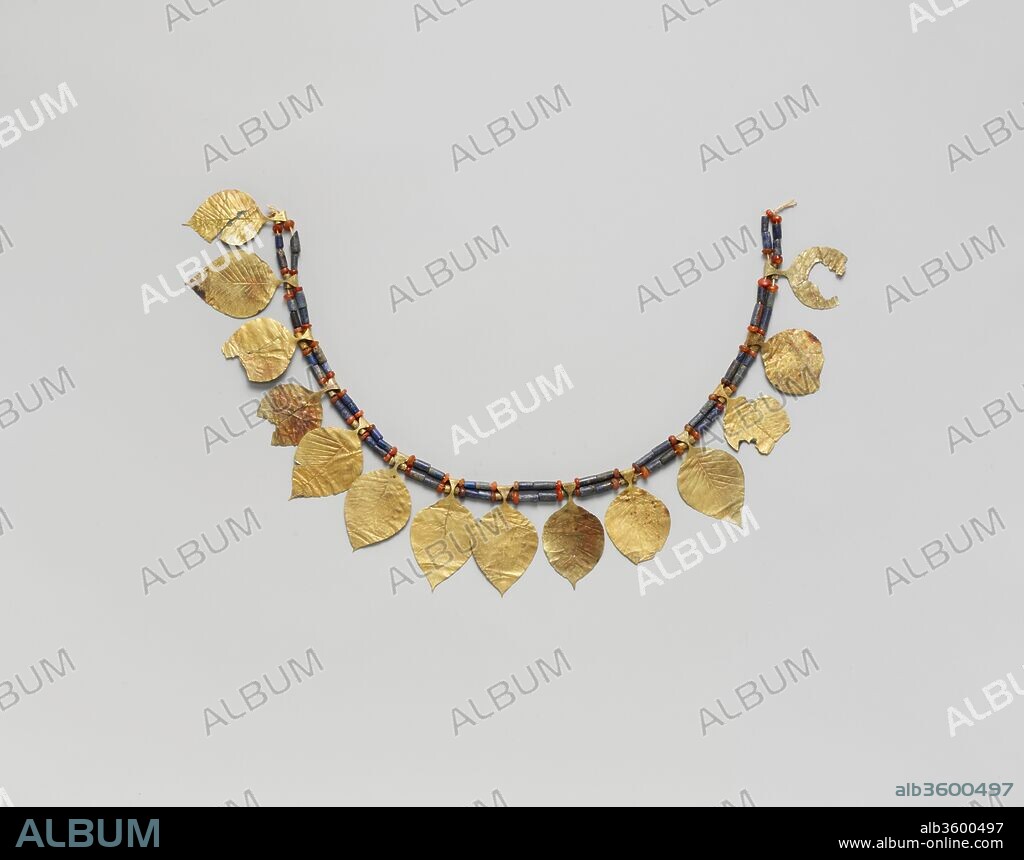alb3600497
HEADDRESS

|
Ajouter à une autre Lightbox |
|
Ajouter à une autre Lightbox |



Avez-vous déjà un compte? S'identifier
Vous n'avez pas de compte ? S'inscrire
Acheter cette image

Titre:
HEADDRESS
Légende:
Traduction automatique: Coiffure. Culture : sumérienne. Dimensions : L. 15 1/8 in. (38,5 cm). Date : env. 2600-2500 avant JC. Les rois et les nobles sont devenus de plus en plus puissants et indépendants de l'autorité du temple au cours de la période dynastique précoce (2900-2350 avant JC), bien que le succès du règne d'un roi ait été considéré comme dépendant du soutien des dieux. Une mesure frappante de la richesse royale était le cimetière de la ville d'Ur, dans lequel seize tombes royales ont été fouillées dans les années 1920 et 1930 par Sir Leonard Woolley. Ces tombes consistaient en une chambre funéraire voûtée pour le roi ou la reine, une fosse attenante dans laquelle jusqu'à soixante-quatorze préposés étaient enterrés et une rampe menant à la tombe depuis le sol. Ce délicat chapelet de feuilles d'or séparées par du lapis-lazuli et des perles de cornaline ornait le front de l'une des servantes de la soi-disant Tombe du Roi. De plus, les préposés enterrés portaient des colliers d'or et de lapis-lazuli, des rubans de cheveux en or et des anneaux de cheveux en argent. L'or, l'argent, le lapis et la cornaline étant introuvables en Mésopotamie, la présence de ces riches parures dans la tombe royale atteste de la richesse des premiers rois dynastiques ainsi que de l'existence d'un système commercial complexe qui s'étendait bien au-delà. la vallée de la Mésopotamie.
Headdress. Culture: Sumerian. Dimensions: L. 15 1/8 in. (38.5 cm). Date: ca. 2600-2500 B.C..
Kings and nobles became increasingly powerful and independent of temple authority during the course of the Early Dynastic period (2900-2350 B.C.), although the success of a king's reign was considered to depend on support from the gods. A striking measure of royal wealth was the cemetery in the city of Ur, in which sixteen royal tombs were excavated in the 1920s and 1930s by Sir Leonard Woolley. These tombs consisted of a vaulted burial chamber for the king or queen, an adjoining pit in which as many as seventy-four attendants were buried, and a ramp leading into the grave from the ground.
This delicate chaplet of gold leaves separated by lapis lazuli and carnelian beads adorned the forehead of one of the female attendants in the so-called King's Grave. In addition, the entombed attendants wore necklaces of gold and lapis lazuli, gold hair ribbons, and silver hair rings. Since gold, silver, lapis, and carnelian are not found in Mesopotamia, the presence of these rich adornments in the royal tomb attests to the wealth of the Early Dynastic kings as well as to the existence of a complex system of trade that extended far beyond the Mesopotamian River valley.
Technique/matériel:
Gold, lapis lazuli, carnelian
Période:
Early Dynastic IIIa
Musée:
Metropolitan Museum of Art, New York, USA
Crédit:
Album / Metropolitan Museum of Art, NY
Autorisations:
Modèle: Non - Propriété: Non
Questions sur les droits?
Questions sur les droits?
Taille de l'image:
4200 x 3311 px | 39.8 MB
Taille d'impression:
35.6 x 28.0 cm | 14.0 x 11.0 in (300 dpi)
Mots clés:
 Pinterest
Pinterest Twitter
Twitter Facebook
Facebook Copier le lien
Copier le lien Email
Email
